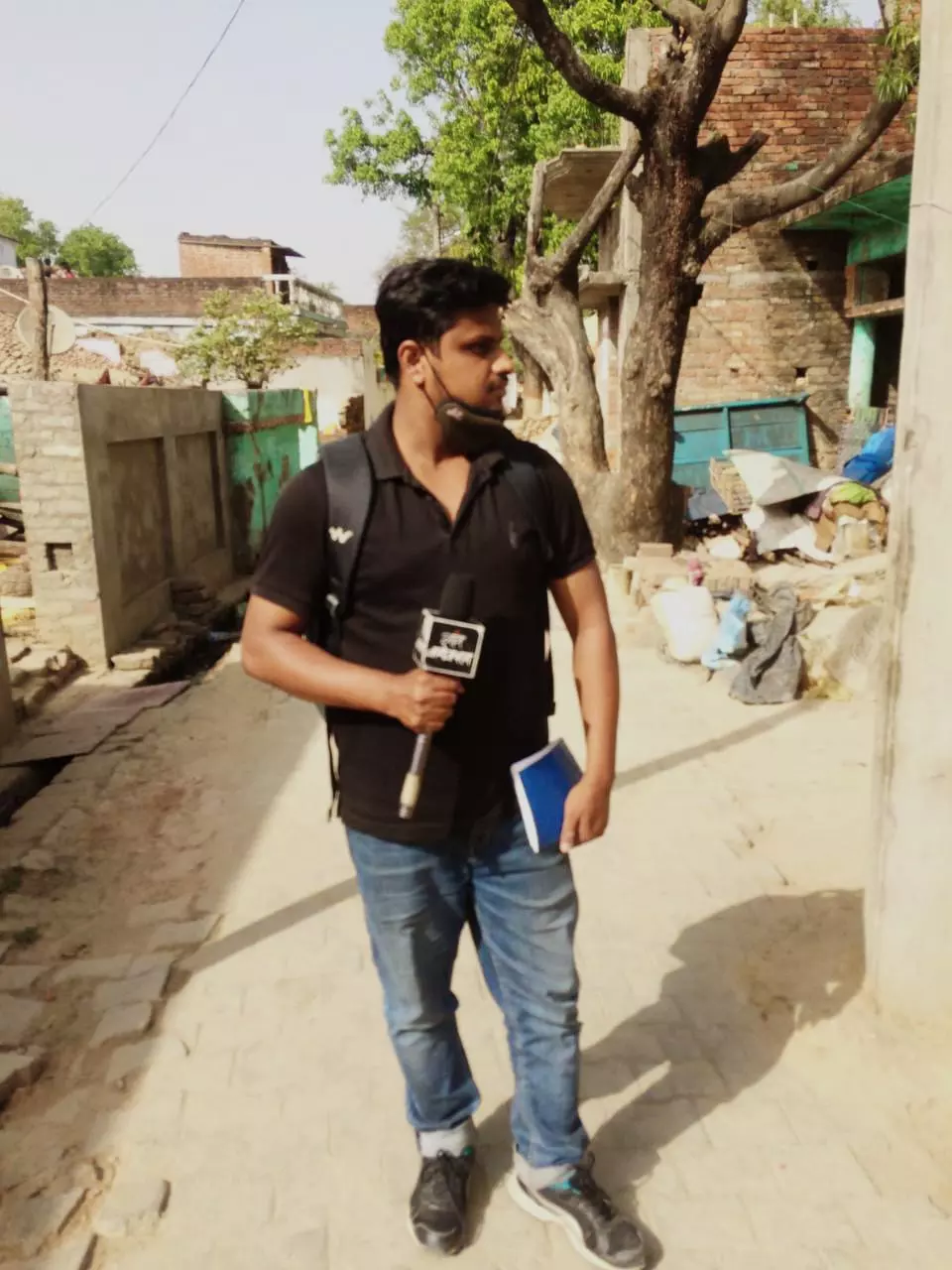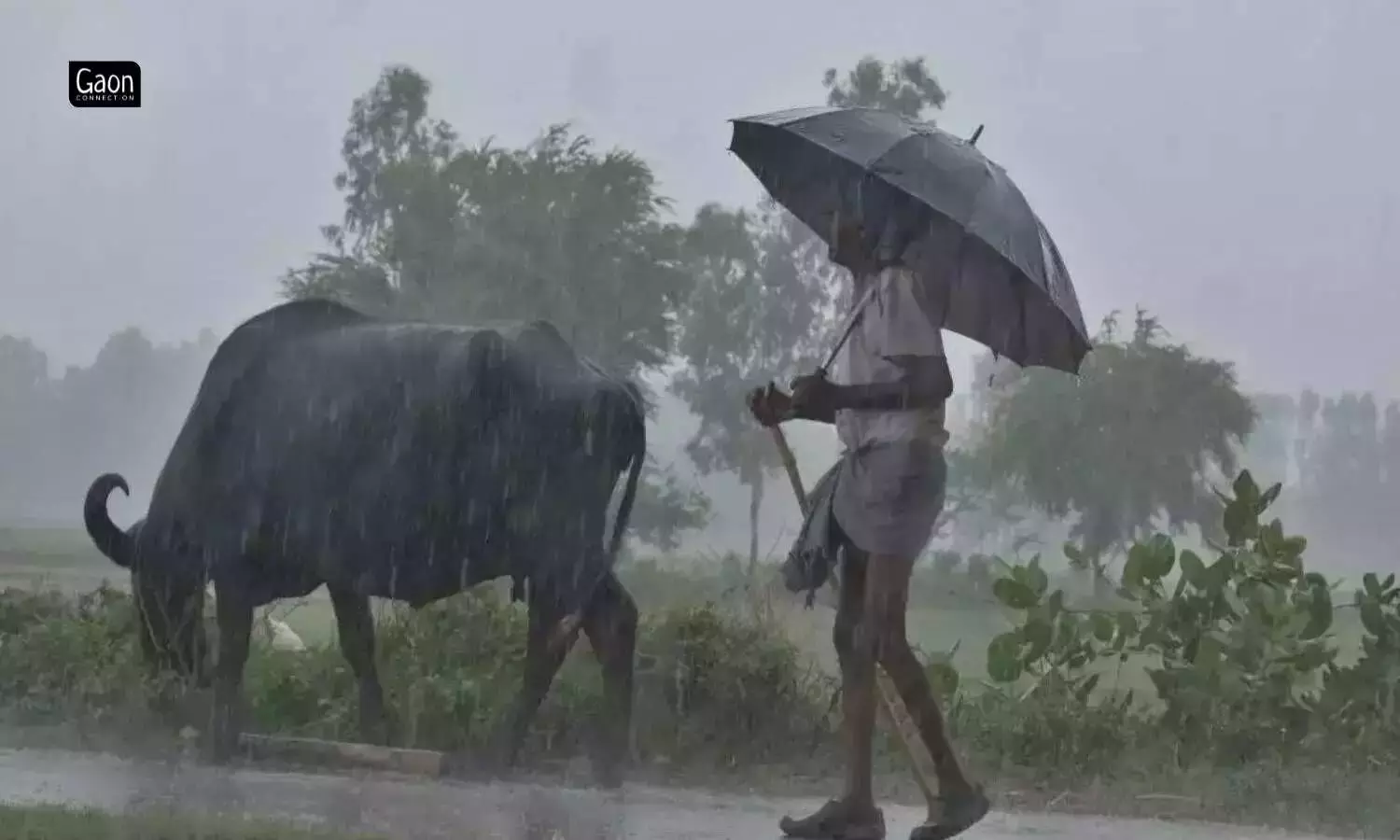What Caused Unseasonal Heavy Rainfall and Lightning Deaths in Gujarat and Maharashtra? Weather Experts Tell
At least 24 people are reportedly dead due to lightning strikes in Gujarat and large scale crop losses have been reported in Maharashtra. As per weather experts, an interaction between a western disturbance and the moist winds of Arabian Sea led to heavy rainfall accompanied by lightning and hail storms.
 Pratyaksh Srivastava 27 Nov 2023 10:38 AM GMT
Pratyaksh Srivastava 27 Nov 2023 10:38 AM GMT

The worst destruction was caused by lightning that accompanied the rainfall in Gujarat which claimed the lives of at least 24 people. Photo by Wikimedia Commons
Parts of western India have been battered by unseasonal heavy rainfall and hailstorms in late November. Torrential rainfall which began yesterday, November 26 morning, in several districts of Maharashtra and Gujarat have led to large scale destruction of crops and loss of human lives too.
As per news reports, at least 24 people have lost their lives due to lightning strikes in the last two days in Gujarat. Heavy rainfall related deaths are also being reported from Madhya Pradesh (four deaths) in Central India and Rajasthan (one death) in northwest India. Surprisingly, the financial capital of the country, Mumbai, too received heavy rainfall in late November, which is a rare phenomenon.
November and December are known to be dry months in Gujarat and Maharashtra, so what brought about the recent heavy downpour and hailstorms?
Mahesh Palwat, the vice president of meteorology and climate change at private weather forecast website Skymet Weather told Gaon Connection that winds from the upper reaches of Himalayas entered the western Indian region and interacted with the moist winds from the Arabian Sea to bring unseasonal rainfall in the region.
“Western disturbance was looming up to the northeast Arabian Sea region including parts of Rajasthan and Gujarat. The moisture laden winds from the Arabian Sea and their confluence with the winds from western disturbance caused heavy rainfall in parts of Maharashtra and Gujarat which was accompanied by lightning and hail storms in many areas,” Palawat said.
🌩️ Heavy Rainfall and Hailstorm Alert in Vidarbha! 📢
— India Meteorological Department (@Indiametdept) November 27, 2023
Vidarbha has been forecasted to get heavy rainfall with hailstorms on 27th November. Rainfall amounts ranging from 64.5 to 115.6 mm have been reported in the area. Stay safe! pic.twitter.com/Wmpsmj6pgz
A western disturbance is an extra-tropical storm which originates in the Mediterranean region. The disturbance (reduced air pressure) travels from the “western” to the eastern direction. A western disturbance is associated with rainfall, snowfall and fog in northern India.
The India Meteorological Department (IMD) had mentioned in a press statement on November 24 about the approaching western disturbance.
“A fresh Western Disturbance will approach northwest India as an upper-level trough extending up to East central Arabian Sea off Gujarat-Maharashtra-Goa coasts on 25th & 26th November. As a result, the above trough in mid-latitude westerlies in middle & upper tropospheric levels will interact with lower-level trough in easterlies,” it had stated.
The IMD had warned that due to this interaction, ‘light to moderate rainfall at many places’ accompanied with isolated thunderstorms and lightning is likely over Madhya Maharashtra, Konkan, Marathwada and Vidarbha during November 24-November 28. It had also forecasted hail storms and lightning strikes along with the rains.
Lightning strikes in Gujarat kill 24 people & injure 23
The worst destruction was caused by lightning that accompanied the rainfall in Gujarat which claimed the lives of at least 24 people. Officials in Gujrat informed the press that another 23 people were injured due to lightning strikes across the state in the last two days.
“We will begin a survey soon to assess the loss suffered," Gujarat Agriculture Minister Raghavij Patel was quoted adding that compensation will be paid to victims on the basis of the survey's results.
When Gaon Connection approached Colonel (Retd) Sanjay Srivastava who is the Chairperson of the Delhi-based Climate Resilient Observing-Systems Promotion Council (CROPC), he mentioned that such deaths in Gujarat are mainly due to lack of communication and information dissemination to the villagers.
“It is tragic that the state governments are still not as vigilant about lightning which forms a major chunk of deaths due to natural disasters. The challenge is to communicate the impending lightning strikes in the rural areas as the villagers are most vulnerable to lightning. Also, there should be safe shelters with lightning arresters installed in every village,” Srivastava said.
As per the official data maintained by the National Crime Records Bureau (NCRB) on accidental deaths in the country, out of 7,405 accidental deaths attributable to forces of nature (between 2019-20), 38.6 per cent were due to lightning, 13 per cent due to floods and 10.5 per cent due to exposure to cold.
Also, according to the India: Annual Lightning Report 2020-2021, there has been a 34 per cent rise in lightning strikes in the country between 2019-2020 and 2020-21. In Punjab it is up to 331 per cent; in Bihar it is 168 per cent, Haryana is up to 164 per cent, Puducherry 117 per cent, Himachal Pradesh 105 per cent, and West Bengal 100 per cent.
The report also pointed out that 96 per cent of all lightning strike deaths in India are in rural areas, and 77 per cent of those are of farmers.
Rise in lightning incidence linked to global warming
Srivastava, the lightning expert whose organisation has played a vital role in the publication of the report, mentioned that the lightning strikes are increasing in numbers due to an increase in global warming due to an adversely changing climate.
He took note of a 2014 study by scientists at the University of California, which concluded that lightning strikes in the United States may increase by 12 per cent for every degree of rise in the global average air temperature.
“With such a rise in the incidence of lightning, awareness and communication about lightning strikes is vital to save lives,” Srivastava stated.
Farmers in Maharashtra suffer losses
Meanwhile, the recent heavy rainfall has worsened the problems of the farmers in Maharashtra. Earlier this month, Gaon Connection had reported that the Maharashtra government declared drought in 42 blocks of the state. However, farmers’ leaders had complained that farmers in more than 100 blocks are reeling from drought.
Manoj Patil, a farmer from Khalegaon village in Beed district told Gaon Connection that after reeling with a reduced harvest due to drought, farmers in his village were about to sell their cotton produce which is now affected by rainfall.
“The cotton harvest has absorbed water. It will not be ready for sale for at least 15 days till it dries. Also, there is a fear that the cotton might rot or get infested by fungus due to moisture. It’s been a tough year for farmers,” Patil told Gaon Connection.
How to Protect Yourself During Lightning Strikes
#Mumbai #Maharashtra #GlobalWarming #Climate #WesternDisturbance
More Stories




